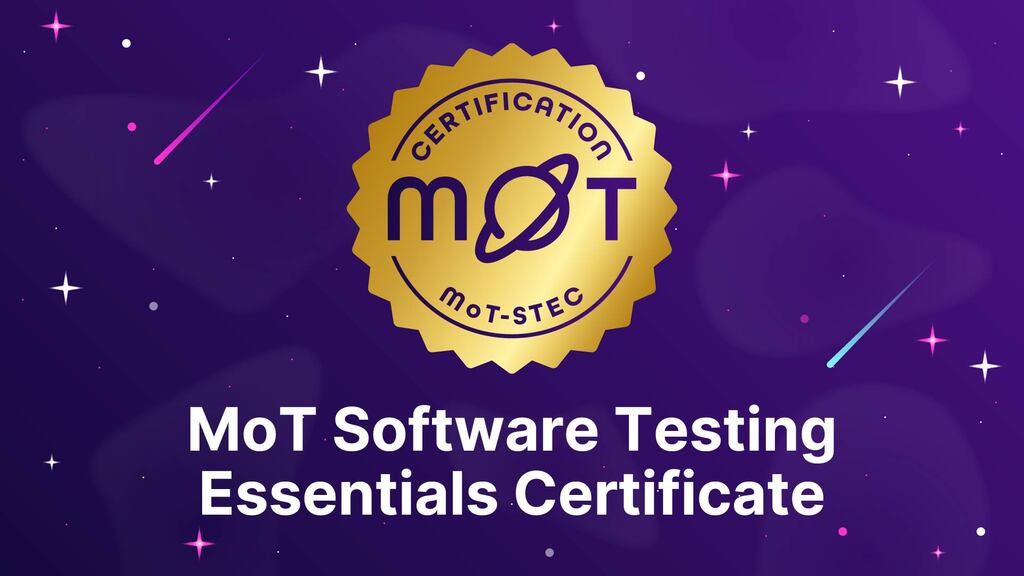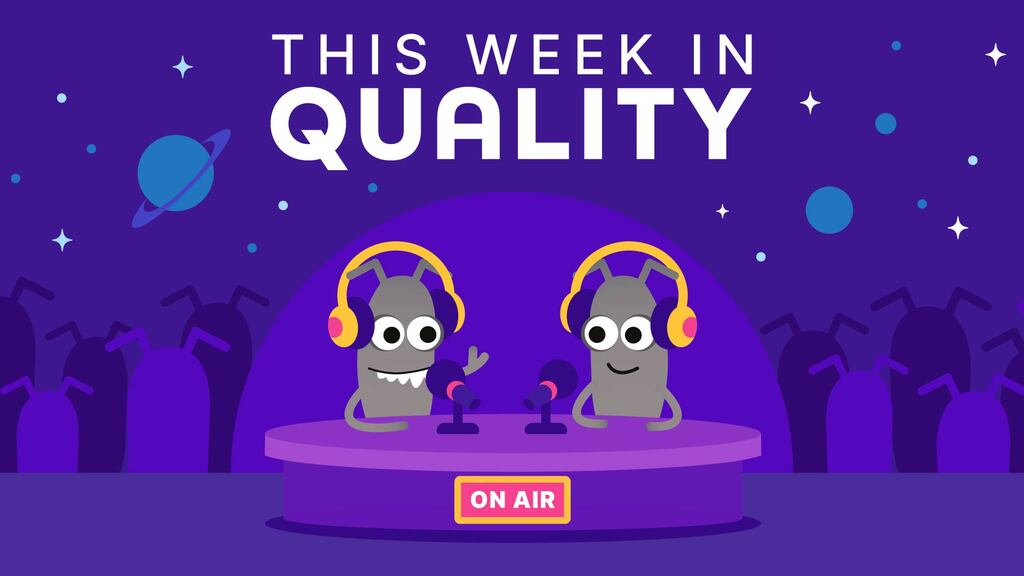By Kwesi Peterson
Why Is Influence Important For A Software Tester?
Think of the most effective test leaders in your organisation. They will have the following characteristics:
- Perspective: the insight to see sooner, and to see farther, than others
- Courage: the ability to risk, to reach, to put one’s self on the line
- Favour: the ability to form special relationships that motivate extra effort
These characteristics aren’t necessarily innate, but can also be learnt. You will need to develop these characteristics to be an effective test leader, influence change, and solve problems.
The Law Of Crucial Conversations
One possible approach is suggested by the authors of the book “Crucial Conversations”. They make the following audacious claim:
“At the heart of almost all chronic problems in our organisations, our teams, and our relationships lie crucial conversations – ones that we’re either not holding or not holding well. Twenty years of research involving more than 100,000 people reveals that the key skill of effective leaders, teammates, parents, and loved ones is the capacity to skillfully address emotionally and politically risky issues. Period.”
If you aspire to be a test lead or a test manager, you’re going to come up against some of the following challenges:
- Talking with a co-worker who behaves offensively or makes suggestive comments
- Giving upper management feedback about their behaviour
- Approaching a manager who is breaking their own safety or quality policy
- Pushing back on a project where the scope and size are unrealistic
- Talking with a team member who isn’t keeping commitments
- Talking with a colleague who is hoarding information or resources
- Giving an unfavourable performance review
- Talking with a co-worker about a personal hygiene problem
Ultimately, being able to deal with these sorts of issues are the key to influencing change effectively in organisations. I’m going to talk about four key skills that are required to influence change effectively:
Step 1: Know Your Objective
Step 2: Deeply Understand Other People’s Concerns
Step 3: Care Personally Whilst Challenging Directly
Step 4: Say It In The Right Way
If you aspire to be a leader within testing, mastering these four steps will be invaluable to you.
Step 1: Know Your Objective
Whilst this step might seem quite simple, it turns out to be much harder to do in practice. Let’s look at a case study to understand why.
A Case Study: Cutting Costs
You’re the test director of a large corporation. You’ve been having a tense meeting with your regional test managers. You’ve been trying to reduce costs, but little has been accomplished to date. Two hours into the meeting, one of the managers steps up and says the following:
We realise that we haven’t done a great job of cutting costs. There’s been one thing that’s making it tough for us to push to cut costs. While you’ve been asking us to cut costs wherever possible, you’re off buying a fancy new testing kit for our new AI division. The rumour is that one of the devices alone will cost £50,000. Is that right?
Where People Often Go Wrong
At this point, our instincts often drive us to make suboptimal decisions. Here are a few examples:
- Win at all costs. The goal of the conversation becomes to win, rather than to resolve the problem. We correct the facts, quibble over details, and point out flaws in their argument.
- Punish them. The goal of the conversation becomes to punish the other person. Rather than hear their concerns, we put them down, insult or belittle them, so that people dare not challenge our authority again.”
- Keeping the peace. Rather than daring to speak our mind, we’re so uncomfortable with the idea of immediate conflict that we keep silent.
However, what we actually want is a conversation that both solves the problem and builds a relationship. As we will see, it is possible.
How To Handle The Situation Well
To handle the above situation well, the first thing you need to do is ask yourself the following question: What do I really want here?
In this case study, the biggest barrier towards people cutting costs is the belief that you’re being a hypocrite. In order to get what you want, you need to address this issue head on by having an open dialogue about this.
Secondly, you need to refocus your brain. In the heat of the moment, adrenaline kicks in and our motives shift. To refocus on your goal, you need to ask yourself the following questions:
- What do I really want for myself?
- What do I really want for others?
- What do I really want for the relationship?
And the killer question is the following:
“How would I behave if I really wanted these results?”
Once you’ve asked yourself these questions, you can compare it to how you’re actually behaving, and change your behaviour if necessary. For example, as you ask yourself these questions, you might come to a realisation like: “I’m pushing hard, making the argument stronger than I actually believe, and doing anything to win. But to get the results I want, I need to have an open conversation about my seemingly hypocritical behaviour”.
A Key Pitfall To Avoid
In the above scenario, one could argue that the only choice is to put the other person down to maintain your authority, saying something like:
“I had no choice but to put the other person down, otherwise I would have appeared weak. It was harsh, but the right thing to do”.
This is a key pitfall: assuming that you have to choose between getting results and keeping a relationship. Instead, there’s a more important question that you need to ask yourself:
“What do I want for myself, the other person, and the relationship?”
When you ask yourself this question, you’ll often find that there is a way to share your concerns, listen sincerely to those of others, and build a relationship, all at the same time.
Learn More About Crucial Conversation Skills
Here are a few resources that could help:
- Read the Crucial Conversations book
- Have a look at the VitalSmarts - Crucial Skills blog
- Watch some of the Crucial Conversations videos
Once you’ve absorbed the material above, it’s time to move to step two.
Step 2: Deeply Understand Other People’s Concerns
Knowing your objective is only half the battle. If you don’t understand where other people are coming from, you’re never going to be able to effectively resolve a conflict. However, wonderful things can happen if you are able to effectively empathise with other people’s needs. My favourite book on this is called “Nonviolent Communication” (NVC), by Marshall Rosenberg.
A Case Study: Stakeholder Conflict
To demonstrate the power of empathy, consider the following anecdote:
“It looked like the setup for a gruelling meeting. I was sitting with five executives who were working out how to support a CEO transition. I asked them to state what they each wanted to see as the outcome. All were speaking from within their own positions and expressing their preferences. What they said couldn’t have been more divergent.
They looked at each other, partly helpless, partly amused. I could see this was not a first.
Then I asked them to take some time in silence to reflect on all the responses they had heard, and to come up with a proposal that would attend to the entirety of what they heard, in service of the entire group and the organization. I waited until they all were ready with an answer before hearing from any of them, so that they could truly form their own opinion of this new angle.
When I asked them to share their new proposals, all of us were in awe. Instead of five wildly different suggestions, we now had five overlapping solutions. Within two minutes they settled the one remaining difference, and all agreed on the path forward.”
If you’ve ever been in a situation where different teams have seemed to want completely different things, I’m sure the power of this story will resonate with you. The technique used in the above anecdote is called “Nonviolent Communication”, which I’ll describe in more detail now.
Understanding Nonviolent Communication
Here’s a short description of the Nonviolent communication process.
The Nonviolent Communication model is the symbiotic integration of four main components:
- Consciousness - “A set of principles and perspectives that support living a life of compassion, collaboration, courage, and authenticity both within ourselves and in our interactions with family, friends, co-workers, or anyone else with whom we might interact.”
- Language - “Understanding how our words, as well as the words of others contribute to either connection or distance, helping or hurting, compromise or conquest in an interaction or situation.”
- Communication - “Knowing how to ask for what we want without threatening, demanding or coercing, how to hear others (even in the course of a disagreement) without absorbing self-criticism or blame, and how to move toward mutually beneficial and positive outcomes for all parties involved in an interaction or situation.”
- Means of Influence - “Learning how to share our power with others instead of using our power over others, in order to facilitate an environment where all parties feel equally honoured, valued, respected, and safe.”
That’s a fairly abstract description, but it can be broken down into simpler terms.
How To Do Nonviolent Communication
To break it down, Nonviolent Communication has four parts:
- The concrete actions we observe that affect our well-being
- How we feel in relation to what we observe
- The needs, values, desires, etc. that create our feelings
- The concrete actions we request in order to enrich our lives
For example, suppose you have a messy colleague at work, who leaves your shared kitchen a mess. You might respond as follows:
“Alex, when I see three plates unwashed by the sink and two stained coffee mugs, I feel irritated because I am needing more order in the rooms that we share in common. Would you be willing to put your used plates and mugs in the dishwasher?”
The following diagram explains how the process works:

However, to get a flavour for how nonviolent communication works, it’s best to see it in action. Here’s a video demonstrating nonviolent communication in action.
Learn More About Non-violent Communication
If you want the best introduction to the subject, you should:
- Watch the following 9-min video: The Basics of Non Violent Communication
- Read the following two blog posts for a striking example of NVC in action:
If you’re wanting to learn even more about this, I’d recommend the following resources:
- The book “Nonviolent Communication”
- The Centre for Nonviolent Communication website
- Attend a nonviolent communication workshop
Step 3: Care Personally Whilst Challenging Directly
Having read steps 1 and 2, you may be wondering how you can speak your mind without hurting the other person’s feelings, or how you can make sure you’re understanding their wants and needs without compromising your own desires.
I assure you, it is possible to do both. In Radical Candor, a book by Kim Scott, there’s a really useful framework you can use:

Let’s break down what each of these four quadrants mean.
Manipulative Insincerity
This is the worst of the four quadrants:
“Manipulative Insincerity (backstabbing, political or passive-aggressive behaviour) is what happens when you neither Care Personally nor Challenge Directly. It’s praise that is insincere, flattery to a person’s face and harsh criticism behind their back.”
As an example, suppose you have a poorly performing employee who has just given a terrible presentation. Manipulative insincerity would be saying “good job” to the employee, whilst secretly thinking: “they’ll be happy if I tell them that I liked their stupid presentation, and that will make my life easier than explaining why it was terrible. In the long run, though, I really need to find someone to replace them.”
For another example, you can watch the following video: Manipulative Insincerity
I’m hoping that you’re in agreement that this behaviour is obviously bad, so I’ll move on to the next quadrant swiftly.
Ruinous Empathy
This is the quadrant where the most common types of management mistakes occur.
“Ruinous Empathy is what happens when you want to spare someone’s short-term feelings, so you don’t tell them something they need to know. You Care Personally, but fail to Challenge Directly. It’s praise that isn’t specific enough to help the person understand what was good, or criticism that is sugar-coated and unclear. Or simply silence. Ruinous Empathy may feel nice or safe, but is ultimately unhelpful and even damaging.”
Have you ever hired an employee who turned out not to be suited to the role? If so, the following true story from the book will resonate with you:
“Maybe you’ve heard me talk about Bob, an employee I hired at one of my start-ups. Despite having a stellar resume, Bob was doing terrible work. Instead of letting Bob know that his work wasn’t up to par, I picked up his slack and failed to offer him the feedback and guidance he needed to improve.
Because I was operating from a place of Ruinous Empathy, I left a lot of important things unsaid. Just like financial debt, or technical debt, there’s also “feedback debt,” and that’s what I was creating with Bob. I ultimately had to fire Bob or risk losing the trust of my entire team. So, not so caring after all.
Bob’s first reaction was, “Why didn’t you tell me?” The short answer: I didn’t want to hurt his feelings. But by not seizing the opportunity to utilize “constructive tension” — taking on a difficult conversation when Bob wasn’t meeting his stated objectives — I created additional problems that might have been solvable had I offered guidance as soon as I noticed there was a problem.”
Ultimately, if you don’t tell people what they need to hear, you’re harming them in the long run.
Obnoxious Aggression
“Obnoxious Aggression, also called brutal honesty or front stabbing, is what happens when you challenge someone directly, but don’t show you care about them personally. It’s praise that doesn’t feel sincere or criticism that isn’t delivered kindly.”
I suspect many of you will have worked for a manager who was a “challenging jerk”, but achieved results. Whilst it’s true that obnoxious aggression achieves results, it is also harmful, as I’m sure many of you have experienced.
The key thing here to emphasize is that Radical Candor is NOT the same as being “Brutally Honest”.

More specifically:
- Challenging Directly does NOT mean you can assume that whatever you think is “the truth” and therefore should be shoved down people’s throats.
- Challenging Directly does NOT mean you are right. You may be wrong. In fact, you should expect and welcome a reciprocal challenge.
- The “direct” in “Challenge Directly” does NOT mean to be brutal. It means to share your (humble) opinions directly, rather than talking badly about people behind their backs.
- Challenge Directly is does NOT mean just saying whatever nutty thing pops into your head.
Using Radical Candor can let us Care Personally whilst Challenging Directly.
Understanding Radical Candor
We can define Radical Candor with the acronym HHIPP.
HHIPP: “Radical Candor is Humble, it’s Helpful, it’s Immediate, it’s in Person, in private if it’s criticism and in public if it’s praise, and it doesn’t Personalize.”
To see an example of Radical Candor in action, consider the following scenario:
Your colleague Max has walked out of the restroom, fly down, shirt-tail sticking out the front. What do you do?

You can see that only Radical Candor manages to help Max without humiliating him; it’s caring personally whilst challenging directly.
Learn More About Radical Candor
If you’re wanting to learn how to actually put Radical Candor into practice, I’d recommend the following resources:
- The Radical Candor book
- The Radial Candor website
Step 4: Say It In The Right Way
So, you’ve worked out what your objective is. You’ve worked out what the other person wants and needs. You’ve thought of a way to make sure you’re being empathetic without compromising your desires. And yet your message still isn’t getting through!
At this point, there’s only one thing left to try; say what you’re saying in a different way.
We’re familiar with coming up with arguments and justifications for a course of action we think is right. If you’re a manager, you’ve probably used your position of authority to get your way on at least one occasion. However, there are some techniques that are sorely neglected, especially in a work context. The book “The Mind Gym” suggests a range of influential techniques you could use.
A Case Study: Trying New Testing Techniques
You’ve recently become the test lead at a new company. The team currently uses automated, scripted tests for pretty much all their testing. Having recently attended a conference, you’ve decided that you’d like to try using exploratory testing as part of your testing approach. However, you know that your management line is very risk-averse and tend not to like changing processes.
I’m going to walk you through a structured way that you might consider going about it.
Remember The Golden Principle
When it comes to influencing others, there is the Golden Principle: people make decisions for their own reasons, not yours. When trying to influence people, it’s vital that we understand what the other person’s wants, needs and desires are, and use tactics that would work for them, as opposed to tactics that will work on us if we were in their situation.
Know What Tools You Have Available
The book, “The Mind Gym” mentions nine different influencing tactics, which I’ll mention briefly:
- “Reason: using facts, logic and argument to make a case”
- “Inspire: appealing to emotions and suggesting what could be possible, if only the other person were persuaded”
- “Asking: using questions to encourage the other person to make their own way to your conclusion”
- “Feel Good: making someone feel good so that they’re more likely to agree with you”
- “Deal: offering/giving someone something in return for their agreement (either implicitly or explicitly)”
- “Favour: asking for something simply because you want or need it”
- “Silent Allies: referring to the views of other people, generally those similar to the person you are trying to persuade”
- “Authority: using authority from a position of power or by appealing to a rule or principle”
- “Force: using assertive behaviour such as threats or warnings”
That’s a lot of tactics. I’ll walk you through some rules for when to apply them.
Know Yourself
Your context and the person you’re trying to persuade will influence which tactics you use. However, here are some guidelines that you may find useful:
-
The nine tactics are ranked loosely in terms of order of effectiveness (based on averages from a range of different situations)
-
In certain domains, you’ll find that you’re naturally inclined to use certain tactics more frequently. At home, people often use “Feel Good” or “Favour”. At work, managers often start with “Reason”, then move directly to “Authority” or “Force”. It’s worth considering using tactics that you don’t habitually use. For example, using “Inspire” or “Ask” at work often leads to much better outcomes
Get Strategic
Typically, these tactics are used in combination, rather than in isolation. It’s often worth explicitly thinking about how you could use a range of tactics. For the case study that we mentioned, here’s a range of tactics you could use:
|
Influencing Tactic |
How To Use It |
|
Reason |
Explain that it will reduce the cost of testing by up to 30% |
|
Inspire |
Describe the amazing presentations you saw at the conference |
|
Feel Good |
Express appreciation that your manager has been supportive of your other initiatives |
|
Silent Allies |
Mention that other teams within the company have used it with success |
Combining all these tactics, you could try an approach such as this:
“Hey, there is something I’ve been meaning to discuss with you. At the conference I went to last month, I saw some really impressive presentations. My favourite presentation demonstrated how they’d combined automated, scripted testing with exploratory testing to reduce costs by 30% whilst improving the morale of the team, which was truly awesome! I know that some of our key objectives for this quarter include cutting the cost of testing and boosting morale within the department, and I was wondering if it might be beneficial for us to trial this new approach? I know that other departments have started to use these techniques with some success. I realise that I’ve come with quite a few new ideas in the past few months, and I appreciate how supportive you’ve been of my ideas so far. Would it be possible for us to trial this new approach on our next project?”
If You Don’t Succeed, Remember The Golden Principle
If you don’t succeed, don’t despair. Just remember that the most common reason that influence doesn’t work is that we’re not seeing things from the other person’s perspective. So try asking questions to understand their wants and needs before trying to continue.
Learn More About Influencing Skills
If you’re wanting to learn how to develop your influencing skills, I’d suggest a few resources:
- The Mind Gym book
- Sign up to The Mind Gym
Go Forth And Influence The World!
As we mentioned at the beginning of the article, the key skill of effective leaders, teammates, parents, and loved ones is the capacity to skillfully address emotionally and politically risky issues, or “Crucial Conversations”.
We’ve discussed 4 key ideas that will allow you to develop the skill of holding Crucial Conversations successfully: knowing your objective; deeply understanding other people’s concerns; caring personally whilst challenging directly; saying it in the right way.
Finally, it’s worth saying that learning these skills will not just benefit you in a work context, but will enrich your communities, your relationships, and even your personal health. I hope that you’ve found this advice useful, and we’d love to hear examples of you using some of the things you’ve learnt in your daily lives.
References
Bio
I'm Kwesi, a 24-year old born and raised in London. Having done a Maths degree at Cambridge, I decided to go into software. I've been working at Metaswitch for almost 3 years now, and I'm currently a Test Lead, testing our Networking Protocol Stack. A typical work week involves a mix of exploratory testing, coaching, managing deliveries, improving processes, and prototyping new ideas.
Interests
In my spare time, I spend most of my time doing sports; football, boxercise, touch rugby, you name it! I spend a lot of my time reading about rationality, biases and understanding the psychology of people. I also enjoy relaxing with a pint or two with friends, and occasionally blog about testing and psychology.




